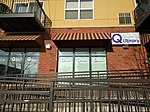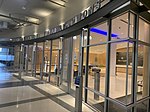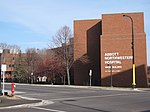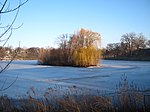East Phillips, Minneapolis

East Phillips is a neighborhood within the Phillips community in Minneapolis. Its northern boundary runs along East 24th Street from Bloomington Avenue to 17th Avenue South, then runs along East 22nd Street from 17th Avenue South to Little Earth Trail and Hiawatha Avenue. Its other boundaries are Hiawatha Avenue to the east, East Lake Street to the south, and Bloomington Avenue to the west. The Phillips community has only been subdivided into smaller neighborhoods within the last couple years; the boundaries of East Phillips were officially designated on December 23, 2005. As this change has been fairly recent, most residents still refer to the area as just "Phillips". The neighborhood also features the Little Earth residential community.
Excerpt from the Wikipedia article East Phillips, Minneapolis (License: CC BY-SA 3.0, Authors, Images).East Phillips, Minneapolis
Bloomington Avenue South, Minneapolis
Geographical coordinates (GPS) Address Nearby Places Show on map
Geographical coordinates (GPS)
| Latitude | Longitude |
|---|---|
| N 44.951 ° | E -93.2526 ° |
Address
Bloomington Avenue South 2831
55407 Minneapolis
Minnesota, United States
Open on Google Maps








